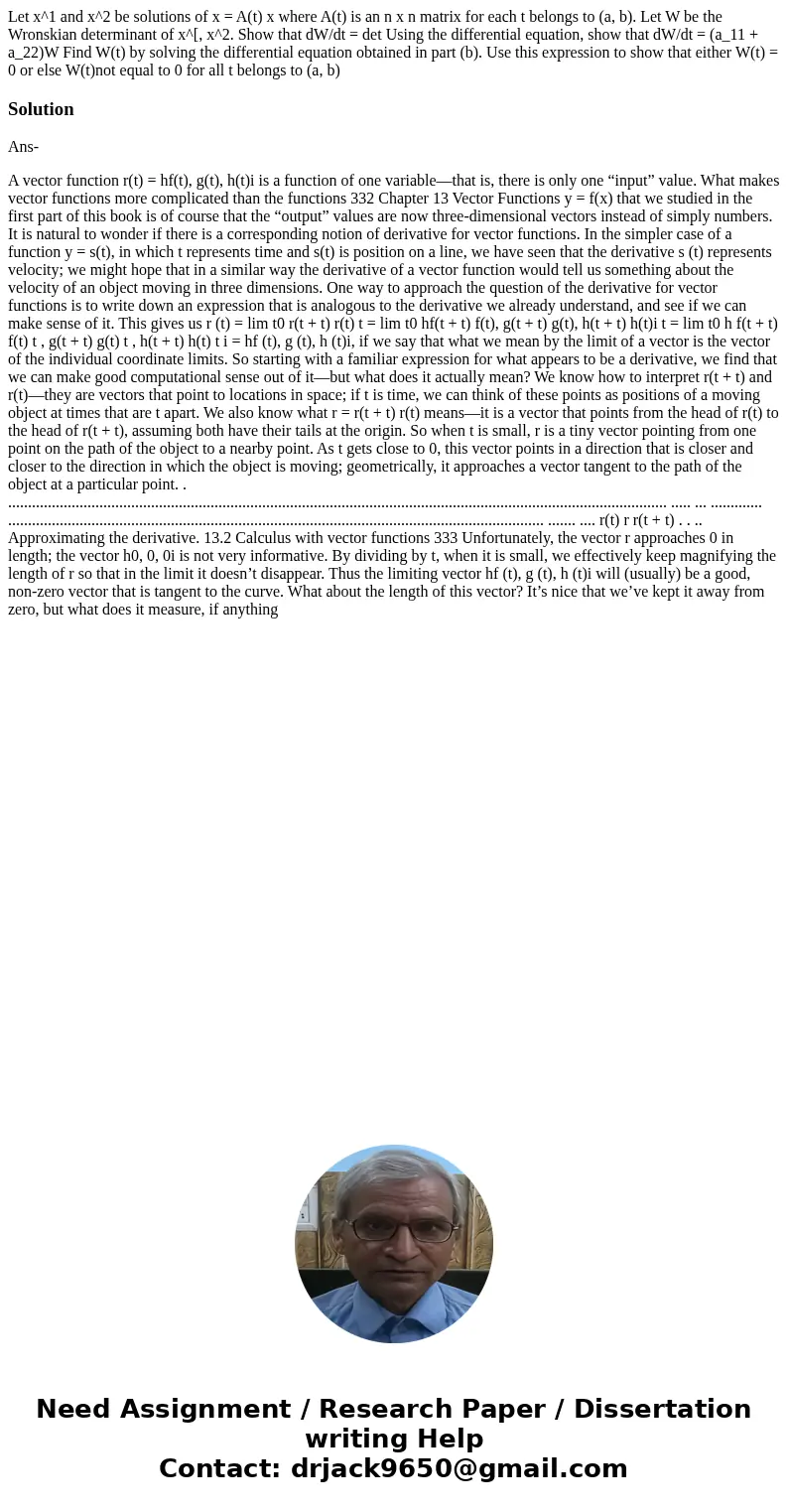Let x1 and x2 be solutions of x At x where At is an n x n m
Solution
Ans-
A vector function r(t) = hf(t), g(t), h(t)i is a function of one variable—that is, there is only one “input” value. What makes vector functions more complicated than the functions 332 Chapter 13 Vector Functions y = f(x) that we studied in the first part of this book is of course that the “output” values are now three-dimensional vectors instead of simply numbers. It is natural to wonder if there is a corresponding notion of derivative for vector functions. In the simpler case of a function y = s(t), in which t represents time and s(t) is position on a line, we have seen that the derivative s (t) represents velocity; we might hope that in a similar way the derivative of a vector function would tell us something about the velocity of an object moving in three dimensions. One way to approach the question of the derivative for vector functions is to write down an expression that is analogous to the derivative we already understand, and see if we can make sense of it. This gives us r (t) = lim t0 r(t + t) r(t) t = lim t0 hf(t + t) f(t), g(t + t) g(t), h(t + t) h(t)i t = lim t0 h f(t + t) f(t) t , g(t + t) g(t) t , h(t + t) h(t) t i = hf (t), g (t), h (t)i, if we say that what we mean by the limit of a vector is the vector of the individual coordinate limits. So starting with a familiar expression for what appears to be a derivative, we find that we can make good computational sense out of it—but what does it actually mean? We know how to interpret r(t + t) and r(t)—they are vectors that point to locations in space; if t is time, we can think of these points as positions of a moving object at times that are t apart. We also know what r = r(t + t) r(t) means—it is a vector that points from the head of r(t) to the head of r(t + t), assuming both have their tails at the origin. So when t is small, r is a tiny vector pointing from one point on the path of the object to a nearby point. As t gets close to 0, this vector points in a direction that is closer and closer to the direction in which the object is moving; geometrically, it approaches a vector tangent to the path of the object at a particular point. . ...................................................................................................................................................................... ..... ... ............. ....................................................................................................................................... ....... .... r(t) r r(t + t) . . .. Approximating the derivative. 13.2 Calculus with vector functions 333 Unfortunately, the vector r approaches 0 in length; the vector h0, 0, 0i is not very informative. By dividing by t, when it is small, we effectively keep magnifying the length of r so that in the limit it doesn’t disappear. Thus the limiting vector hf (t), g (t), h (t)i will (usually) be a good, non-zero vector that is tangent to the curve. What about the length of this vector? It’s nice that we’ve kept it away from zero, but what does it measure, if anything

 Homework Sourse
Homework Sourse